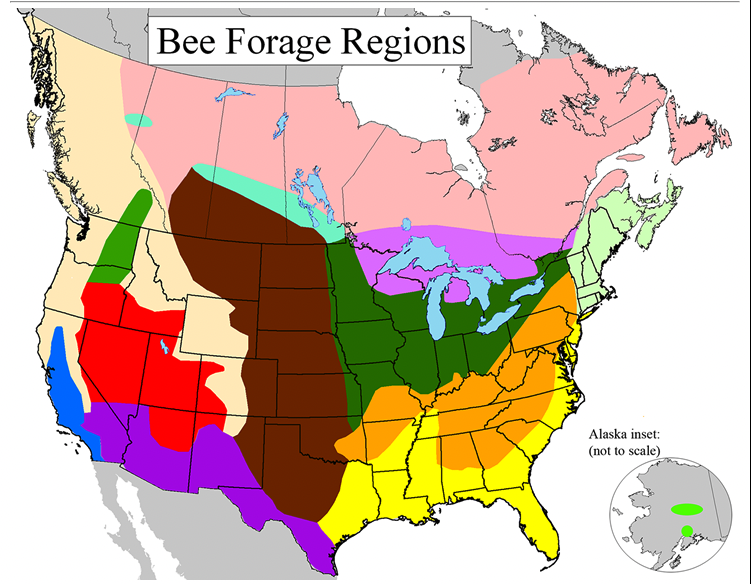The 16 oz Plastic Squeeze bottle is convenient to use, and won't break as easily as glass. Glass bottles are better for long term storage.
Tasting Notes:
Rich, complex, with a bit of tangy finish. The color is medium reddish amber.
It's good honey, but different from 2022.
Major Floral Sources:
Tulip Poplar, Sumac, Sourwood, and Dutch White Clover were the major contributors to this year's crop.
Note that there are 50 plant species important to honeybees in the Middle Tennesse area, so nectar and pollen from many of those will be represented.
The major floral sources indicate where I (the beekeeper) believe most of the nectar came from. This is based on what was blooming when hives were filling up, as well as flavor, color, and aroma of the honey.
How is our honey produced?
Transparancy is key to trust. If you want to dive deep into how I keep bees and produce honey, follow our YouTube channel - Duck River Honey YouTube Channel
The short answer is that our honey is:
- Unheated
- We never heat honey past 104° F. This is a natural temperature that hives will reach in summer. Big box stores often pasteurize honey at 160-170°, which kills all the beneficial enzymes added by the bees.
- Unfiltered
- We strain honey to remove chunks of wax or debris. We do not filter, so particles of fine wax and pollen are present. Big box store honey is often heated and pumped through fine micron filters to remove all pollen and wax.
- We do not use antibiotics.
- We do not use synthetic miticides. We do use organic acids to control varroa mites.
How should I store my honey?
Freezing honey is the best way to store it long term. Freezing prevents crystallization and preserves enzyme activity.
How can I liquefy crystallized honey?
Gently warm it in a hot water bath. 104° F is the minimum temperature to liquefy granulated honey.
How Local is Local?
USDA says that anything produced within 400 miles of your location is "local". I believe the correct answer with honey is more complicated.
People searching for local honey are often trying to innoculate themselves with local pollens to help with seasonal allergies. In this case, the types of plants growing in your area vs where the honey was made matters far more than a generic 400 mile circle on a map.
Ecoregions are better measurement of the plant types in a given area. Based on the map below my honey could be considered local for Middle and East TN, all of Kentucky, and parts of several other states. It would not be considered local for West Tennessee.









